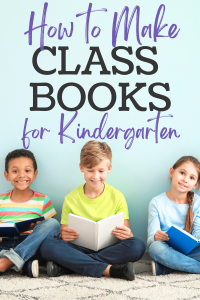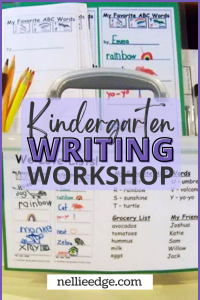Professional Development Credits and Distance Learning – Practicum Suggestions
Nellie Edge Seminars and Workshops may be taken with a follow-up Practicum for 1, 2 or 3 semester credits (4.5 quarter credits). The registration form and fee of $62.00 per credit is payable to the University of the Pacific. You will fill out the form and attach your check on the day of our workshop. This requires a 15-hour “teacher-friendly” practicum follow-up project for each credit. The projects will support you in implementing the strategies shared during our professional development day. You will have up to 4 months to complete the practicum and extensions are available upon request. Submit course work to: Dr. Allan H. Lifson, Nellie Edge Seminar Follow-up, 729 W 16th St., Ste. B-3, Costa Mesa, CA 92627, 800-479-1995. See www.teacherfriendly.com for the most frequently asked questions about practicum follow-up.
Professional Readings for Reflection and Practical Application: One Option
As in the past, we offer participants the opportunity to meet the practicum requirements with professional reading.Read the seminar manual or any of the professional books listed in the resource book bibliography. Write a three-page response paper to the book. Discuss how the research will affect your practices as an educator or include at least 3 new concepts or strategies that you will implement in your classroom as a result of your reading. This would qualify for one unit of practicum credit.
Our Recommended Suggestions for 15-hour Practicum Projects:
1. Explore and Use Excellence in Kindergarten and Early Literacy Resources at nellieedge.com
- Begin with our photo essays, e-Books, video clips, and links to our Annotated Literacy Award Websites and other favorite sites. Download poetry pages and Little Books.
- Gather resources for a particular theme or project.
- Join an informative professional chat board (we highly recommend teachers.net/mentors/kindergarten). Listen in or post questions.
2. Expand your Joyful Writing-to-Read Program (see complimentary e-Books)
How will you systematically integrate more authentic writing activities across the curriculum?
- Reread Writing-to-Read Accelerates Literacy: Make an implementation plan.
- Read the book Kid Writing: A Systematic Approach to Journals, Phonics and Writing Workshop, by Eileen Feldgus and Isabelle Cardonick and visit their inspiring website www.kidwriting.com. Develop and evaluate your “kid writing” program. Train parents and volunteers to help.
- Implement the Susie Haas “Name Ticket” handwriting strategy and evaluate progress.
- Create independent writing centers.
3. Develop a Personal Book and/or Classroom Website of Your Philosophy and Practice: Who I Am in the Lives of Children
You may choose to begin with a photo of yourself and a one-page personal philosophy statement about your teaching beliefs. Follow it up with at least 20 photos of children in your classroom actively involved in learning with concise captions under each photo. These pages can be kept in clear plastic sleeves in a 3-ring binder and shared with parents. You will see excellent models as you peruse www.nellieedge.com and websites from some of our Kindergarten Literacy Award teachers.
4. Create Celebrations of Language with a Monthly Plan for I Can Read Notebooks
What songs, poems, rhymes, chants, story excerpts and quality literature will you share with your children? Which ones will they memorize, recite and perform? How will you develop phonemic awareness and connect oral language to print? (Remember, it is the familiarity of the English language that allows a child’s decoding to be error-free, their reading to be fluent and with comprehension.)
5. Building a Joyful Learning Community: Use Rituals, Celebrations & Traditions
Write your “community of learners” plan for the first day of school. How will you greet the children and bring them together? What will you do to bring closure at the end of the day? What memorable literacy rituals will you implement?
“Community is more important to learning than any teaching strategy.”
6. Focus on Joyful Accelerated Literacy, and Intentional Strategies that Differentiate Instruction
Reread Celebrate Language and Accelerate Literacy, by Nellie Edge, ©2012. What new engaging activities and multisensory teaching strategies will you use to accelerate literacy and reach high Common Core State Standards? How are these practices supported by literacy research, “best practices” research and the science of how the young child’s brain learns best?
7. Keep an Observation/Reflection Journal of Your Experiences Teaching ASL (American Sign Language)
Teach ABC Phonics: Sing, Sign, and Read!, monitor progress. What did you notice?
What do you notice when you begin singing and signing a favorite song? How are your children responding? Are they teaching each other? How do parents respond? How do you systematically use the signing of songs to accelerate literacy? Refer to our Magic of Signing Songs DVD and literacy manuals. See ASL instructional Video Clips to practice.
8. Gather Information about The National Board of Professional Teaching Standards Certification (see www.nbpts.org)
Begin the process of certification through the National Board for Professional Teaching Standards. Locate state resources for funding and dialog with kindergarten teachers who have gone through the process. (Teachers say it is an awesome personal and professional experience!)
9. Make Voracious Vocabulary Learning a Daily Priority: Give Little Kids Big Words!
- Analyze your curriculum and make a plan to systematically build high-level vocabulary through literature and studies. What wondrous words will you introduce and integrate into the curriculum?
- How will you know if your children understand basic language concepts (backward, forward, farthest, nearest, always, never, etc.)? Systematically and intentionally teach Common Core State Standards vocabulary (e.g., illustrator, author, fiction, nonfiction…).
10. Develop Your “Parents as Partners” Program
- Describe your plan for parent collaboration, communication and education. Adapt any Nellie Edge parent letters to meet your needs.
- Develop your parent information notebook (each of our literacy manuals contain articles that you may want to include). Plan how you will develop your parent lending library.
- How will parents be encouraged to be a part of your classroom community and a partner in meaningful learning projects at home?
- Plan for monthly “Good News” post cards to go home to families.
We have a covenant that says, “We jointly share responsibility for educating your child.”
11. Teach Explicit Comprehension Strategies with Quality Fiction and Nonfiction - Expand Your Repertoire
Develop lesson plans incorporating in-depth comprehension strategies. Teach children about schema and metacognition: activate background knowledge, create sensory images, engage in grand conversations, draw inferences, synthesize ideas, etc. (See resource books including Teach Comprehension Strategies in Kindergarten by Andie Cunningham and Ruth Shagoury.)
12. Understand and Use the Common Core State Standards for Curriculum Mapping.
Plan how you will share these high international standards with families. See Common Core Standards.
The above projects are only suggestions; you are always encouraged to design a practicum to meet your specific needs. Dr. Lifson wants this assignment to be meaningful for you.
Get our weekly blog for more high-impact strategies and free resources!









